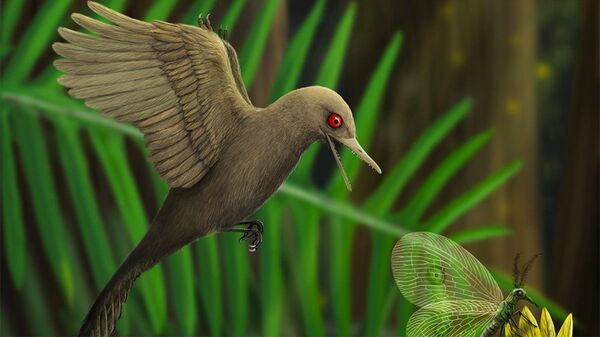A team of Chinese, American and Canadian paleontologists have made an amazing discovery – the skull of a tiny, bird-like dinosaur no bigger than a bee hummingbird encased in a 99-million-year-old piece of amber.
In an article published in Nature on Wednesday, scientists explained that they believe that the skull, measuring just 7 mm long, belonged to an adult Oculudentavis (Latin for ‘eye-tooth bird’), with the dinosaur believed to have weighed just a couple grams.
Images of the dino published by scientists show that it had huge eye sockets on either side of its head, with the eyes themselves protected against excessive light. The upper and lower jaws, meanwhile, contain dozens of razor-sharp teeth.
Huge news, or rather, tiny news
— Armin Reindl (@ArminReindl) March 11, 2020
A new, hummingbird sized avialean found in an amber in Myanmar, given the name Oculudentavis khaungraae
I usually don't get too excited over the amber stuff, but this is amazinghttps://t.co/jsctJqUGDH pic.twitter.com/RMmI3swvzZ
It’s thought that the dinosaur would go on the hunt during the daytime, with its diet consisting of bugs and other small invertebrates – which makes it distinct from birds of comparable size.
Paleontologists attribute the dinosaur’s miniature size to the fact that its evolution was believed to have taken place in Myanmar’s islands, leaving the species in isolation from potential predators and some competitors.
Given that they only found the dinosaur's head, scientists can only guess at how the rest of the animal looked, and aren't sure whether or not it could fly.
Dr. Lars Schmitz of Scripps College in Claremont, California, a coauthor of the study, told CNN that “one of the key messages from this study is that we are probably missing a big chunk of the ecosystem of the dinosaurs. We don’t know a lot about tiny things in the age of the dinosaurs.”

